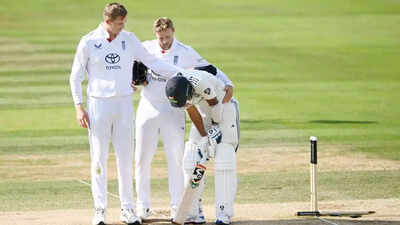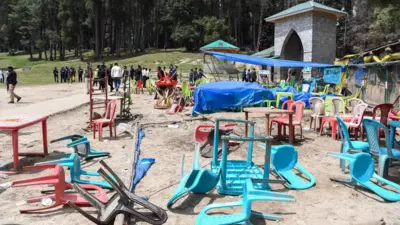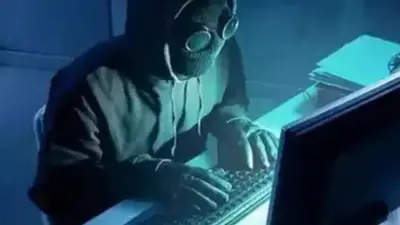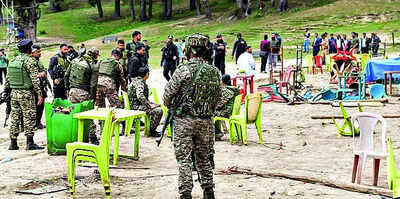41st anniversary of The Times of India, Bengaluru: A city that plays together | Bengaluru News
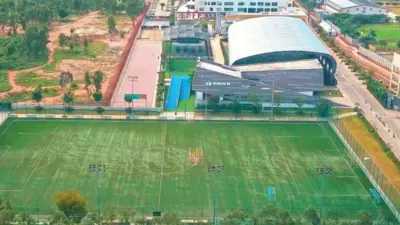
[ad_1]
By: Nandan KamathOur class of 4th standard boys scurried off to the playground during the PE period with empty cups in hand. The sports master had set up a competition for us: who could collect the most pebbles from a field made up of mud, sand and stray bits of gravel? St. Joseph’s Boys’ High School was preparing to host the city’s premier annual inter-school hockey tournament. The sports field at his disposal may have been quite basic, but our sports master certainly had an elite understanding of what makes little boys tick.
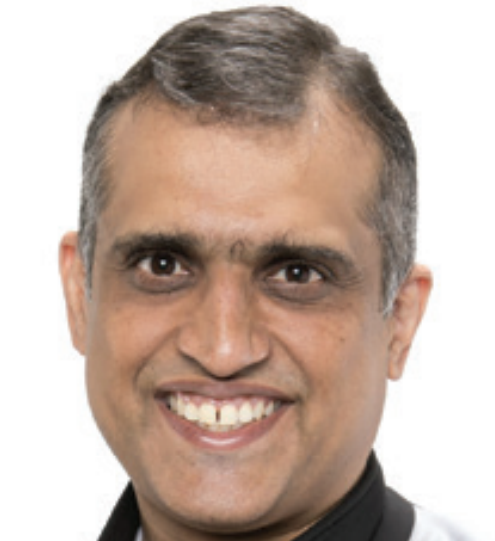
Nandan Kamath
Match day. Not a pebble in sight on the hockey pitch. Our eyes were now peeled on our school team. Futureinternational defender Anil Aldrin trapped the ball with ease. His to-be India team mate Sandeep Somesh scored off a penalty corner. Rahul Dravid’s passes of the hockey ball travelled ‘all along the ground’ – just like his cover drives would. The school team was victorious. Our gang of pebble-pickers had played our part. The team’s success felt personal.Forty years on, Dravid’s is one of the names that adorns North Bengaluru’s remarkable Padukone-Dravid Centre for Sports Excellence, a multi-sport facility promoted by former badminton player Vivek Kumar. Nearby, Aldrin coaches hockey at Vidyashilp Academy, a private school that is intent on keeping the sport alive. Somesh runs Yes For Hockey! a program creating opportunities for government school students to play.Even beyond the original trio of my boyhood sports heroes, sports is being served well. Hockey Olympian Arjun Halappa serves as joint director at the Lakshyan Academy of Sports – a private training centre inthe city’s South. Nisha Millet crisscrosses the city teaching kids to build a healthy relationship with the water at Bengaluru’s many private swimming pools. Rohan Bopanna runs a tennis academy with batches for both elite players and underprivileged youngsters scouted from the far reaches of the country. Fitness coach Swetha Subbiah and former footballer Tanvie Hans bring the city’s women together to play as Sisters in Sweat.These initiatives provide a flavour of the types of private initiatives contributing fresh energy to Bengaluru’s evergreen sports landscape.
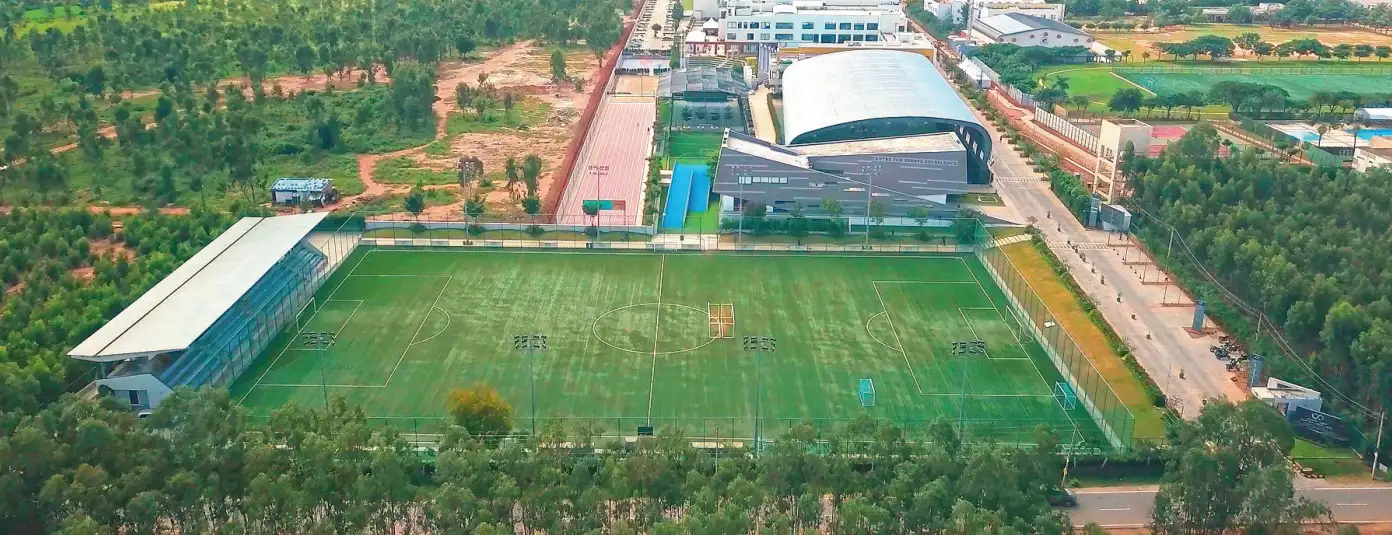
Stanley Carvalho’s recent book Playback – Sports Legends of Bangalore rekindles memories of the city’s champion athletes across sports and over decades. Their unique journeys cannot hide a consistent binding theme– the support that sustained their quests, particularly when they were running low on oxygen. A generous benefactor here, a supportive club official there. Promising athletes. Believers. Supporters. Breakthroughs. Winners. That is Bengaluru.Historically, the city’s schools, clubs and academies have played vital roles. They nurtured a sporting culture that few other Indian cities can boast of. St. Joseph’s played host to the annual ICSE inter-school hockey tournament, Bishop Cotton the cricket shield, and Baldwin’s the football competition.The social and sports clubs organised the competitive cricket and football scenes over the better part of the 20th century, with many of themhaving celebrated their centenaries. Over the years, any Indian swimmer with aspirations of national or international success would relocate to the pools of Bengaluru, to train at either the Basavanagudi Aquatic Centre with coach Pradeep Kumar or at Dolphin Aquatics with coach Nihar Ameen.

Talented badminton playersflocked to the country’s first professional academy – the Prakash Padukone Badminton Academy – to be coached by Padukone and Vimal Kumar. The SURE Athletic Movement brought together a rare combination of coaching passion and skill and the Bangalore Schools Athletic Association Meet lit up the Kanteerava Stadium with the energy of young athletes. Brijesh Patel and Imtiaz Ahmed were among the first to set up private cricket academies, with hundreds of others having since mushroomed across the city as the game, its commerce and collective ambitions grew.There’s something in the city’s air that has made it a fertile place to nurture impossible-sounding dreams. Bengaluru created an ‘ecosystem’ before the word came into vogue. Its athletes were, in many ways, the city’s original entrepreneurs. Now, the city’s entrepreneurs are paying the city back – Rainmatter by Zerodha has an investment fund dedicated to health and sport ventures.Private investors like these are funding pay-per-use football turfs, pickleball and padel venues, video technology-enabled badminton courts and smart swimming pools. These are green shoots of a spectatorship economy maturing into participatory sports culture. Corporate social and personal philanthropic ventures continue to find new ways to bridge access gaps in school sports, academy-settings and marginalised neighbourhoods. Parikrma Humanity Foundation has shown how football can be used to bridge equity gaps in multiple ways, and its annual football tournament is inclusive in both design and spirit. Dream a Dream was an early adopter of using sports to build life skills in kids from vulnerable backgrounds. The city must continue to find ways to give talent from diverse backgrounds a chance to experience sport and a platform to shine on. The unique barriers girls and women face in the city also needs systematic dismantling.Bengaluru always seems to find a way. Its people do a lot with what they have. They keep looking forward. Keep building. The city grows local talent pools. It also attracts talent from across the country. You can check in any time you like – to experience the weather, coaches, sports science expertise and more – but then you may never leave.Looking ahead, the city must remain vigilant and progressive. How do we keep the sporting environment alive and vibrant for everyone in the city? This needs us all to play our parts in responding to Bengaluru’s challenges.Walking distance from each other in the city centre lie large cricket, football, hockey, tennis and athletics stadiums. How many of us have played a single minute on these hallowed turfs? The city’s streets – once the sites of unstructured childhood play – are overrun with traffic and parked vehicles. Kids need space and safety, both in short supply. Public parks need not need be locked up through major parts of the day. Real estate developments can keep the ‘parks and open spaces’ in their developments genuinely publicly-accessible, as they are meant to. Clubs and schools could make their vast sports facilities available to the public during downtimes, even generating some revenue in the bargain. Corporates have the opportunity to adopt and upgrade more public playgrounds as part of their social giving.Countering digital addiction. Childhood obesity. The mental health epidemic. Polarisation and social alienation. Diabetes prevention and heart health. Sports participation and physical activity have a prophylactic and regenerative impact on these realities of city living. These are battles we must fight, battles we must win.Bengaluru will continue to thrive when kids and adults of every age have the opportunity and freedom to experiment, to learn, adapt and grow their relationships with their bodies and its movements, and to perhaps someday even make the city proud on the largest sporting stages on earth. While private initiatives will continue to lead the way, we must weave sport and play into the fabric of every citizen’s daily life with shared responsibility.Pick up a few pebbles. Level the playing field. Keep Bengaluru playing. The cup is ours to fill.(The writer is a sports lawyer and non-profit leader whose early years were consumed playing interschool hockey, cricket and football. He represented and captained the Karnataka state junior cricket teams)
[ad_2]
Source link

